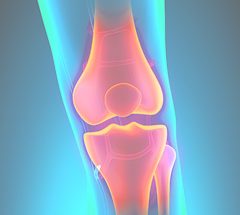Ankle Sprains
Sprained ankles happen all too often — but painful symptoms require treatment right away.
People sprain their ankles all the time — in fact, an estimated 37,000 ankle sprains happen in the United States every day! In many cases, these ankle injuries are a simple twist of the ankle that feel mildly painful for a few days.
But if the ankle becomes painful, swollen or discolored, and you limp when you walk, it’s time to go the emergency room or call an orthopedic surgeon. In most cases, your doctor can treat your severe ankle injury by requiring you to wear a protective brace or boot walker and prescribing routine physical therapy as you heal.
When simple ankle sprains become more complicated
More than 90% of sprained ankles happen when a person points the foot downward, causing the ankle to “roll over” the foot. This movement can partially or completely tear the anterior talofibular ligament and sometimes the calcaneofibular ligament, which attach the smaller bone of the leg (fibula) to the small bones of the foot.
However, sometimes these injuries are more serious than they first appear. Chronic or recurrent ankle sprains, for example, are more difficult to treat. Often a patient tries to return to the activity or sport during which the injury occurred too soon, before the ligaments and muscles have healed. The ligaments remain loose on repeat examination. Continuing to be active with chronic ankle instability can be dangerous and lead to fractures or arthritis, which are more challenging to treat and require care from an orthopedic specialist.
High ankle sprains are an unusual athletic injury where the lower ankle ligaments are okay, but the higher ligaments that keep the ankle joint together between the two bones of the leg (the tibia and fibula) are torn. Every step can spring these ligaments apart, so that the injury never gets the chance to heal. Very careful physical examination by an orthopedic specialist or an MRI is usually the only reliable way to diagnose a high ankle sprain. Once diagnosed, treatment for the high ankle sprain can require a cast, a boot walker or even surgery in the most severe cases.
Seeking treatment for an ankle sprain
Patients with a sprained ankle that does not heal within three months should seek consultation with an orthopedic specialist. In addition to torn ligaments, the ankle may have other, undetected injuries — subtle fractures, tendon injuries, or loose pieces of cartilage or bone.
Another possible cause for the ankle pain could be an osteochondral defect (OCD), which is a cartilage defect on the joint surface. This can lead to a large painful cyst. When it occurs on the talus, or ankle bone, it is known as an OLT (osteochondral lesion of the talus).
Characterizing your ankle injury as “just an ankle sprain” can be dangerous, since ankle injuries can be associated with many other problems that require specialized diagnosis and treatment. If you have experienced a painful ankle sprain or one that does not heal over time, be sure to see an orthopedic specialist as soon as possible.

















